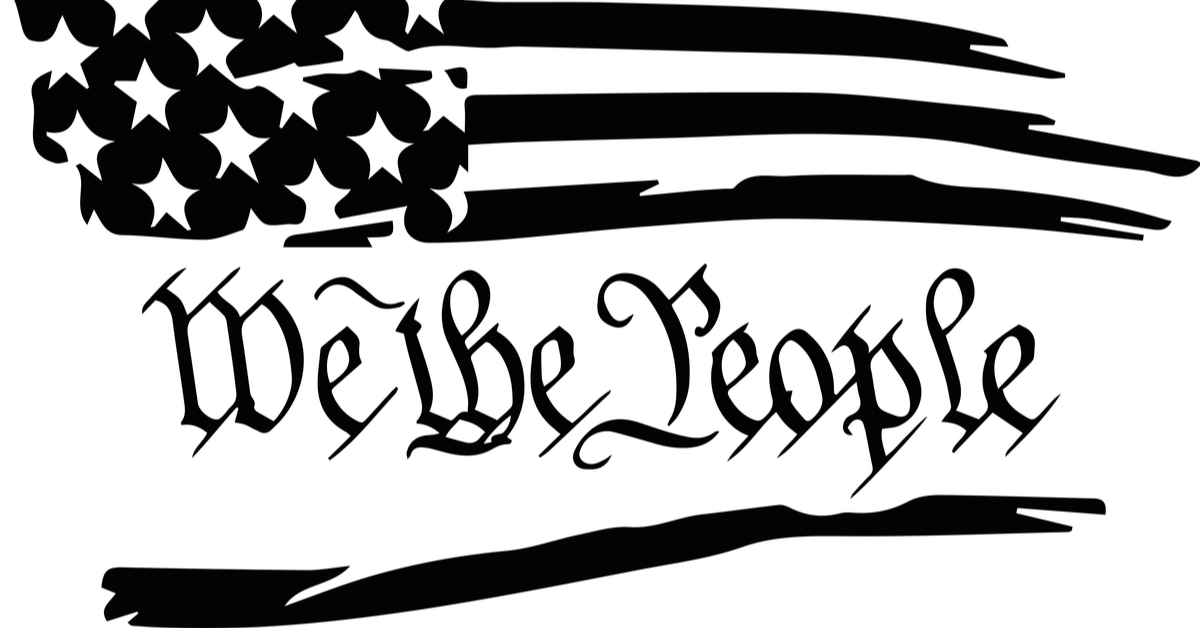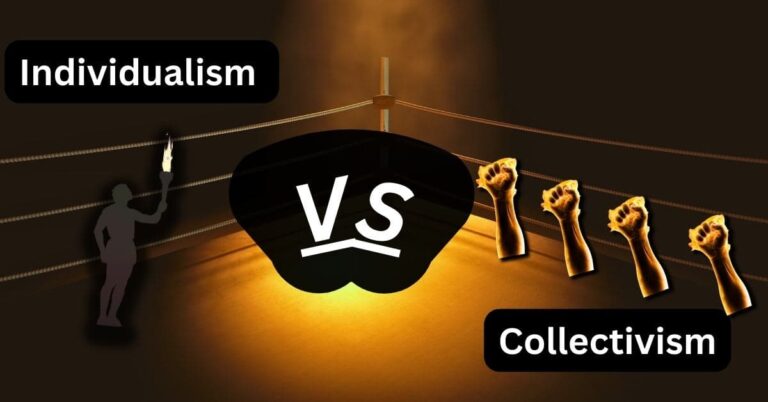You’re pinned against the wall! The road has ended for you, or has it? The Constitution protects against moments of terror. It is the ember of hope patiently waiting to provide shelter when called upon by citizens experiencing tyranny.
The Constitution defends against tyranny by forming a government based on the following: Separation of Powers, Checks and Balances, Federalism, and the 2nd Amendment. Each protection provides necessary restraints on the government and works in tandem to preserve liberty.
Since the Constitution’s inception in 1789, absolute tyranny has not existed. Let’s find out how the Constitution safeguards against tyranny below.
If men were angels, no government would be necessary. If angels were to govern men, neither external nor internal controls on government would be necessary. In framing a government which is to be administered by men over men, the great difficulty lies in this: you must first enable the government to control the governed; and in the next place oblige it to control itself.”
-James Madison, The Federalist Papers
Separation of Powers
Why the Need?
What is necessary to have for a tyrannical government to exist? I’m glad you asked. This is where we need to start.
A leader-or government- must consolidate power to as few individuals as possible to become tyrannical. Our Founders debated how to prevent a tyrannical government during the Constitutional Convention.
The Founding Fathers- influenced by Montesquieu (an 18th-century French philosopher)- formed a government with 3 separate branches. Thankfully, separation of powers provides a great barrier against any one entity grabbing power.
These are the 3 branches:
- Legislative
- Executive
- Judicial
Montesquieu studied the English system and recognized its deficiencies. The Upper Class consisted of Lords and Dukes that controlled government institutions with the King’s blessing.
This became an inefficient way to run a government. Our beloved French philosopher viewed humans as inherently evil.
If humans control positions of power and are evil in nature, they also need their power separated from each other. You can’t put 2 alphas together in a small room and expect there not to be a power struggle.
People’s bad qualities consist of:
- Ability to seek power whenever possible
- Envious of others
- Selfish
The Founders recognized the need to subdue people’s natural tendency to seek fortune, fame, and power. Thus, we have the separation of powers.
How the Founders viewed the Separation of Powers?
Our elected officials are stubborn, greedy, and some outright liars. We want people with integrity that serves the people-not themselves.
Alexander Hamilton (Federalist 71) knew of human tendencies and pointed out how leaders act for themselves.
Hamilton fixed this problem. He declared that every branch of the government serves the people. Therefore, leaders should act with integrity.
Also, one branch could not serve all of the people’s needs. As a result, leaders are placed in multiple branches with specific responsibilities.
If only 1 branch existed, that is equivalent to begging a king for a favor. We aren’t supposed to beg leaders in the USA. Remember, our elected leaders are your equal and answer to you (The People). It doesn’t appear like that sometimes but don’t think of them as bestowing or granting you favors.
Ultimately, the Founders saw the Separation of Powers as protecting Americans in the following ways:
- Provide accountability to elected officials
- Provide competition among branches of government
- Have multiple levels of government for citizens to redress grievances
Checks and Balances
This constitutional protection is self-evident. The title explains the purpose.
To simplify the matter, one branch of government checks the other. This balances the power among the different branches.
Think of it like this…
If you are a light person on a see-saw with an equal weight person opposite, the see-saw is balanced. Everyone is happy. But, what happens if a heavier person climbs on the other side? The balance of power shifted to the heavier person.

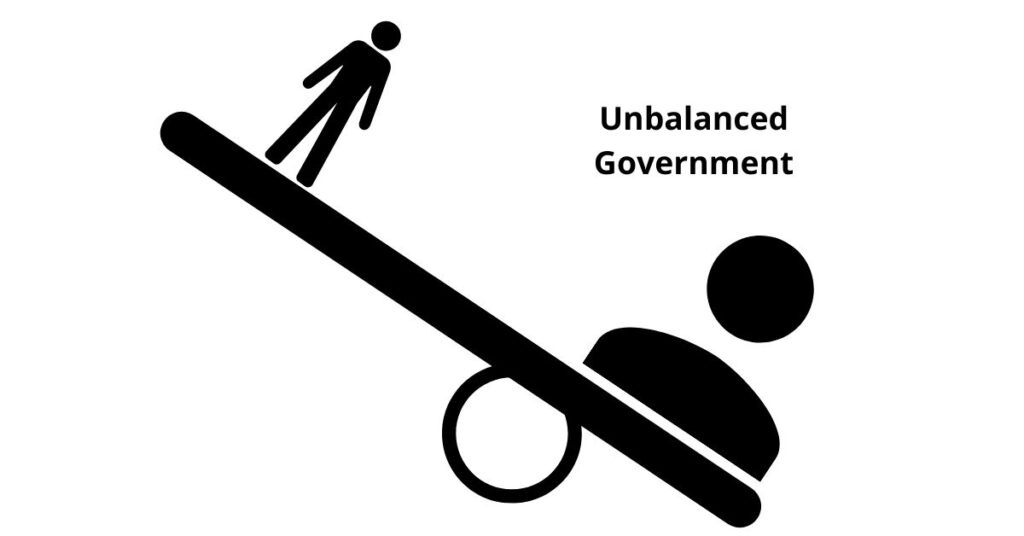
Checks and Balances prevent the heavier person from gaining too much authority. To counteract the heavy person, 2 light weight people need to be on one side of the see-saw. This shifts the balance back to equilibrium. Thus, 2 branches of government balance out the tyrannical one.
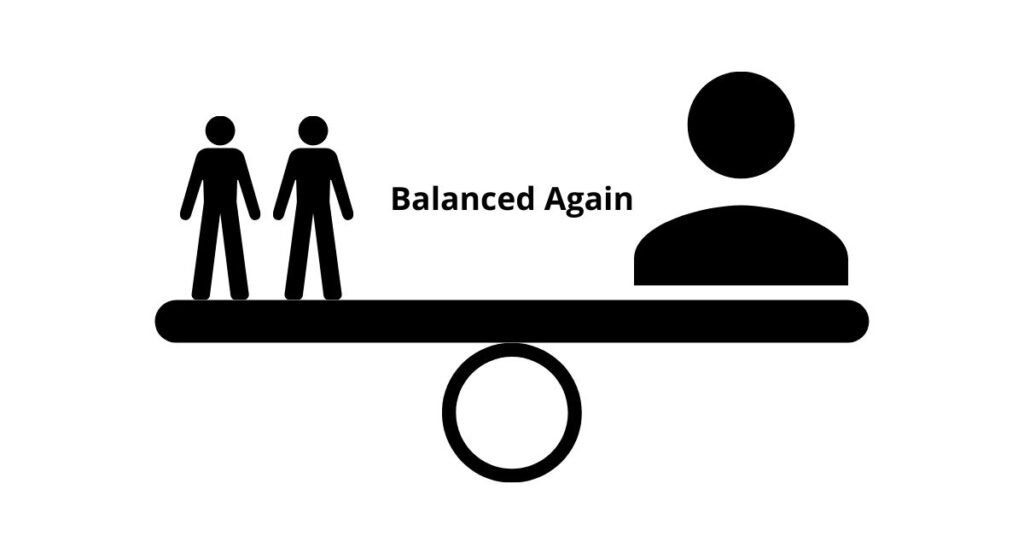
This is what the checks and balances prevent:
- Legislature passing tyrannical laws
- President going crazy absolving the legislature
- Rogue judges arbitrarily ruling without just consideration
Overall, we don’t want the government to represent an unbalanced see-saw. The Checks and Balances keep the government’s operations smoother.
Branches of Government and Basic Duties
A brief synopsis of the fundamental functions of government is below:
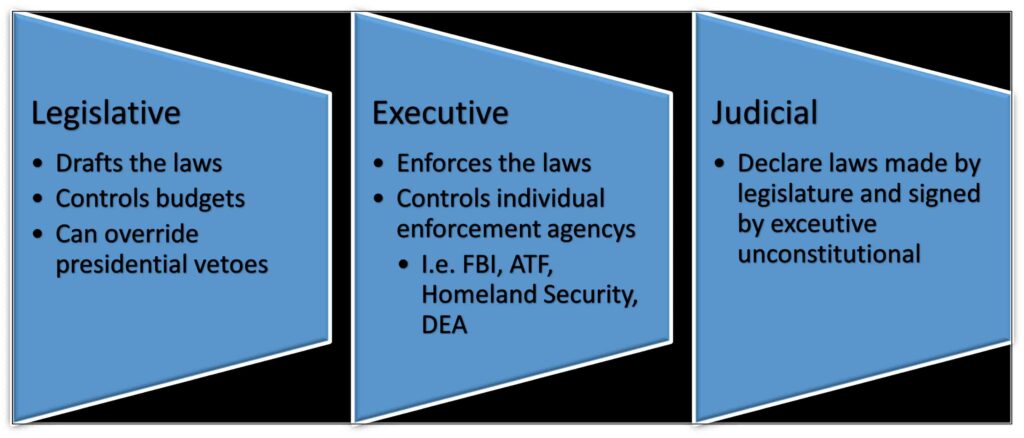
Federalism
What is Federalism?
We hear the word federal and associate it with “big bureaucracy.” In this case, Federalism doesn’t mean exactly that.
Federalism is the division of political power into smaller governments where one doesn’t have complete power. This helps to preserve liberty and autonomy.
The government power structure is:
- Federal (Think Washington D.C.)
- State (Think state capitol on the hill)
- City or County (Think city hall)
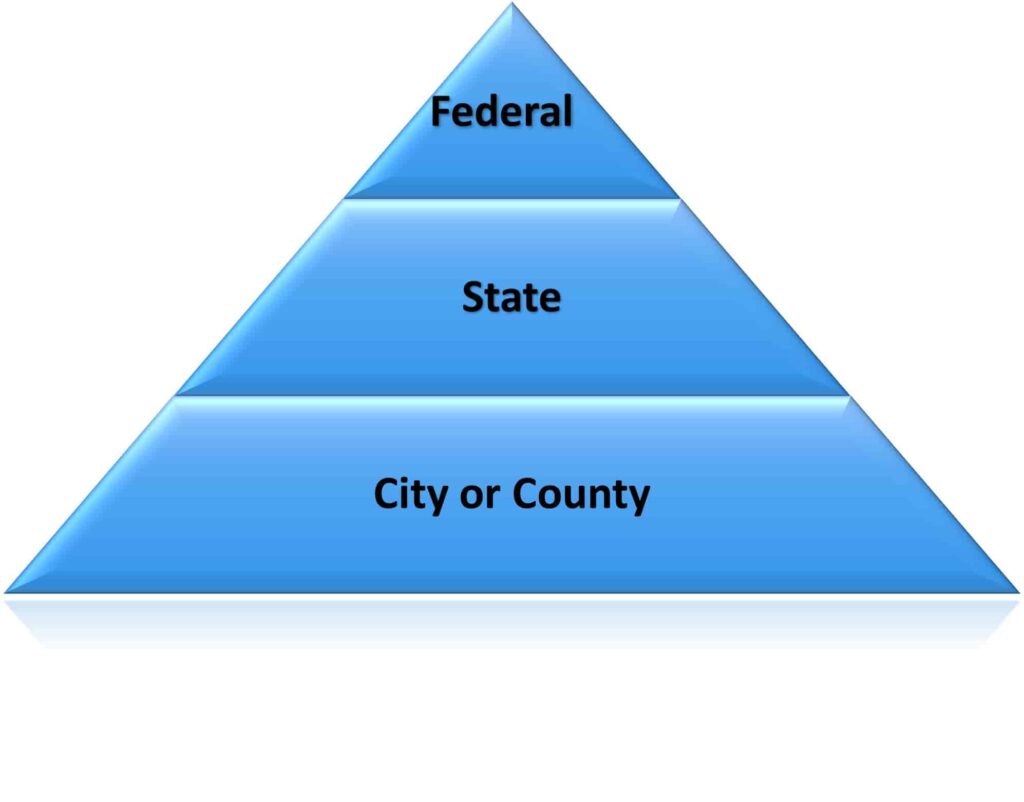
By having power spread out to multiple avenues and geographic locations, it is harder for one particular branch to influence another. There are over 89,000 local governments in the USA, according to the U.S. Census Bureau.
Sly politicians would have to make a lot of backroom deals and travel great distances to thwart other jurisdictions without Federalism.
Also, another forgotten point about Federalism is that state governments help protect their citizens from an overreaching federal government. We all know how disconnected the federal authorities are when politicians try to implement overreaching legislation.
States team up to block, or strongly oppose, the proposed legislation. The cohesiveness of the state governments acts as a check on the federal authority’s urge to go too far.
Federalism’s goal is to share power among several different layers of government. This spreads the balance of power and each layer acts as a check on the other.
Constitutional Related Articles:
• Everything has positives and negatives. LEARN MORE about the good and bad about the Constitution.
• Declaration of Independence vs the Constitution: Which one is better? LEARN MORE by exploring my comparison article between the 2.
2nd Amendment
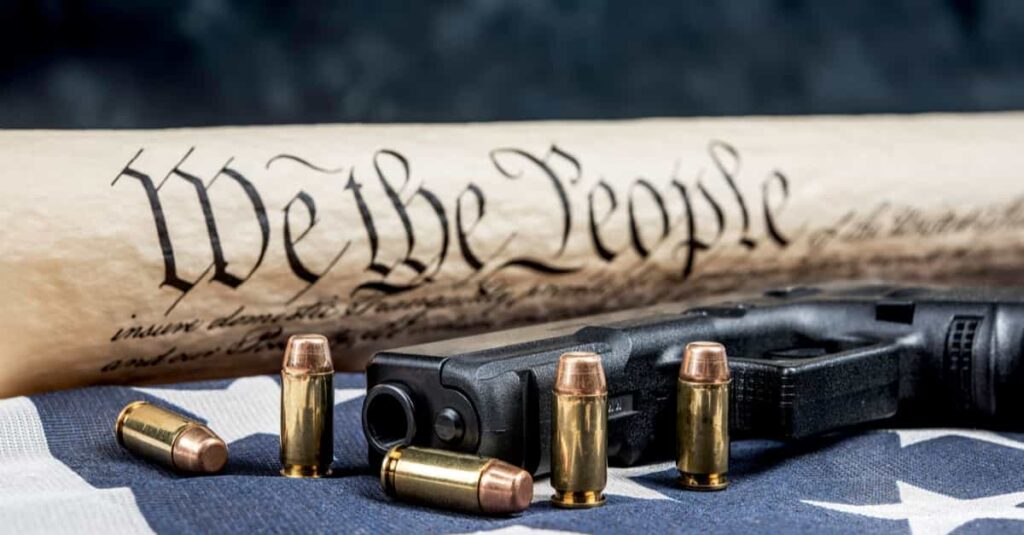
Looking around the world, there are instances of people wishing that they had their own 2nd Amendment. Their ability to defend themselves is limited.
We don’t want that in the United States.
As we have explored earlier in this post, human nature’s past, present, and future are a strong indication of what humans are capable of. We can use our brains for good or evil.
The 2nd Amendment acts as a guard against evil. It is a check so you’re not checkmated by a government that you oppose.
If you have ever played a game of chess, it is embarrassing when you don’t see a game-ending move right before your eyes. Your opponents crush your spirit when they surprise you to win.
Tyrannical governments attempt to crush your soul when they want to control every aspect of your life. Don’t let them!
Defending the Second Amendment is a vital part of the Constitution.
Yes, it is controversial.
Yes, it does come with responsibilities.
Yes, some citizens find the ability of private citizens to own firearms scary.
But those responsibilities are critical in a free society.
Please don’t overlook or dismiss this amendment. It is the 2nd amendment-not the 15 or 18th amendment for a reason. Our Founding Fathers fought a tyrannical monarchy. They didn’t want future generations to have to fight an authoritarian government again.
The 2nd Amendment is great protection for freedom.
Conclusion
Preventing tyranny is the fundamental reason the Constitution places limits on the government. The government passes laws restricting certain aspects of society. Thus, the Constitution acts as the politician’s regulations to neutralize bad legislation. It goes both ways.
Separation of Powers gives different responsibilities to other branches. We can’t have 1 person with power. That is called a king. History shows us that isn’t a popular concept in the Western world.
Each branch of government checks one another. It is always a fantastic idea to have 2 peoples’ opinions rather than 1. Feedback from different branches is a great way to protect against tyranny.
Federalism keeps government offices in different geographical parts of the country. In other words, the government is subdivided into the federal, state, and local.
The 2nd Amendment is the last resort to keeping authorities in check. We never want to use this option but acts as a great deterrent against tyranny.
While the Constitution’s protections aren’t always perfect, there is an amendment process to make the Constitution more robust. Active citizens are the greatest defense against tyranny.
Are you one?
Constitutional Related Articles:
∙ The Constitution included fundamental goals of government. LEARN MORE about what the Founders instituted in the Preamble.
∙ Curious about guns and tyranny? LEARN MORE as I break down the 2nd Amendment word-for-word.
Featured Image: toosweetinc / shutterstock.com
Printed Sources
